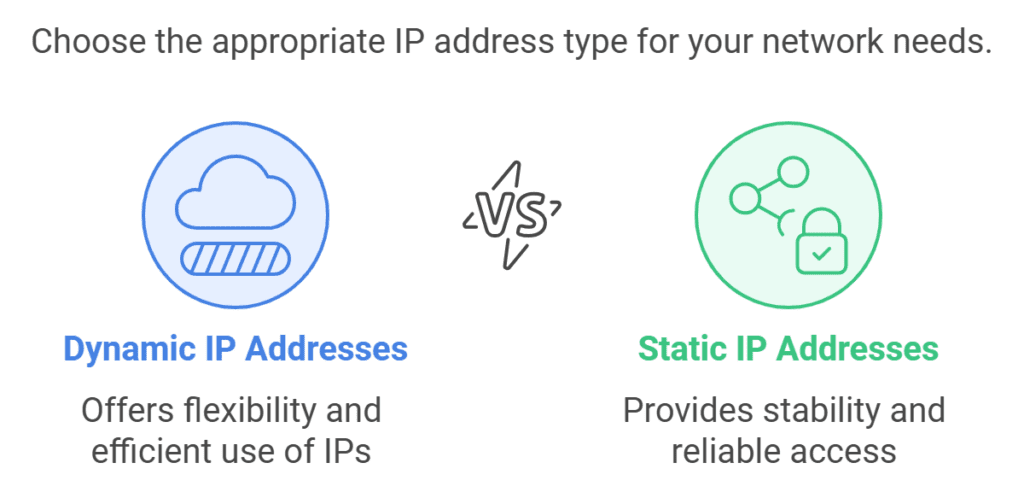Cart
Discount: 0.00 PLN
Discount: 0.00 PLN
Digital Skipper |4/12, 2024

In today's connected world, the term "IP address" is ubiquitous, as most electronic devices now have some form of internet connection. But what exactly is an IP address? "IP" stands for Internet Protocol, and the address refers to the unique label assigned to each device connected to a network that uses this protocol for communication. This article goes through the two main types of IP addresses: dynamic and static. We examine their characteristics, advantages, and uses to provide a comprehensive understanding of how they work and their significance in different network configurations.
For home networks, you are probably familiar with IPv4 addresses, which are a 32-bit numerical label, individually assigned to each device connected to a network that uses the Internet Protocol for communication. You may recognize the address range 192.168.x.x, as this is the common local network range for DHCP addresses (Dynamic Host Configuration Protocol). But have you ever noticed that IP addresses can change? That's because they are dynamic.

A dynamic IP address is an address that can sometimes change, but it doesn't have to change all the time. Modern routers are usually on all the time at home, which means the assigned IP addresses rarely change, and we don't notice it. However, if you disconnect and restart your router, connected devices may no longer have the same IP address as before. This is not a problem, however, as DHCP handles this automatically. Each connected device is assigned a unique address by the router, and it logs each address. For home and private networks, this is ideal as it requires no user configuration.
But what if we need to assign a device a specific address for security or remote access purposes? This is where static IP addresses come in!
A static IP address is a permanently assigned address to a device that never changes (unless changed manually). Basically, this means that if a static IP address has been assigned to a device and the network is restarted, the device will ALWAYS revert to the same address.
Static IP addresses are excellent for configuring file servers, domains, remote access, and port forwarding in networks. But how does this actually help us?
Remote access systems often use static IP addresses, such as a VPN. This allows specific IP addresses to be given access to the server or network and assigned certain privileges within them. This is ideal for commercial and marine vessels that rely on remote monitoring and access to their networks. This way, access to certain devices can be restricted, providing greater control over both access and security, while keeping network and VPN traffic low.
However, there is one thing I want to emphasize when it comes to configuring static IP addresses and networks. Only change these settings if you understand what you are doing and feel confident doing it. When we introduce static IP addresses and things like subnets and masks, it is easy to make the device inaccessible from other systems. Also, make sure to note the IP address assigned.
Some systems require the static address to be assigned via the router, while other devices (such as our PRO products with Ethernet access) allow the static address to be entered in the device itself.
If a static address is assigned to, for example, a PRO-NDC-1E2K, the DHCP settings are overridden, and the device will not automatically be assigned a random 32-bit name when reconnected to a router. If it is kept within the 192.168.x.x range, this is not a major problem. However, if the device is moved to a 10.x.x.x address, both the computer and the device must have access to this address range to reach the PRO-NDC-1E2K.
In summary, the benefits of using a static IP address for the average user are often not worth it. Letting the network run on DHCP with dynamic addresses is perfectly sufficient. For increased security and control, static IP addresses can be used to restrict access, but make sure to note the IP address and always be able to access it, either locally or via remote access.